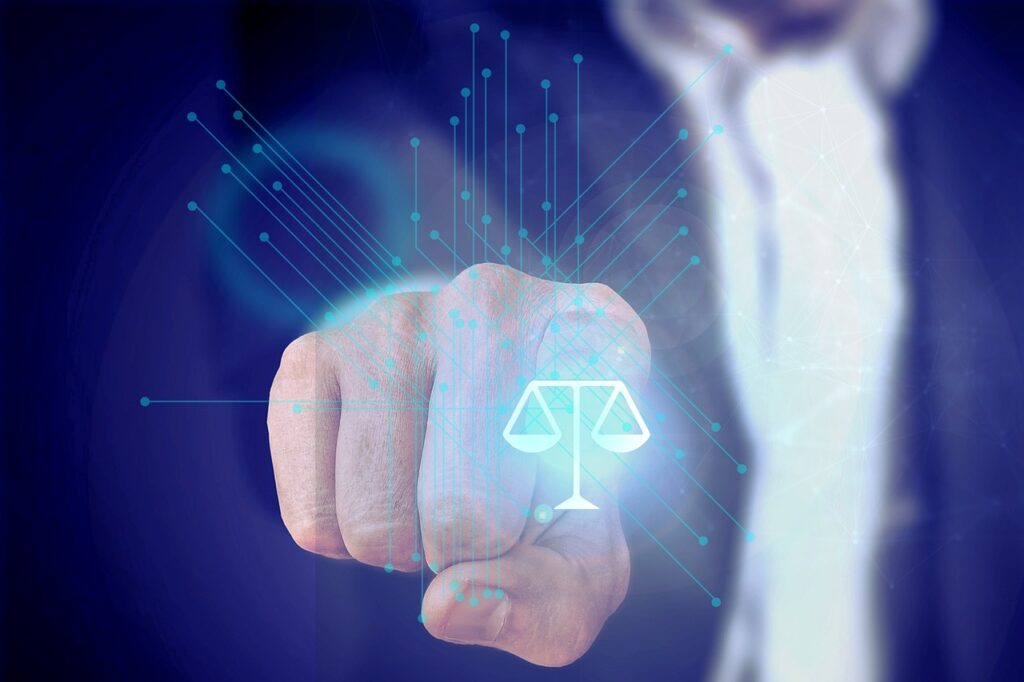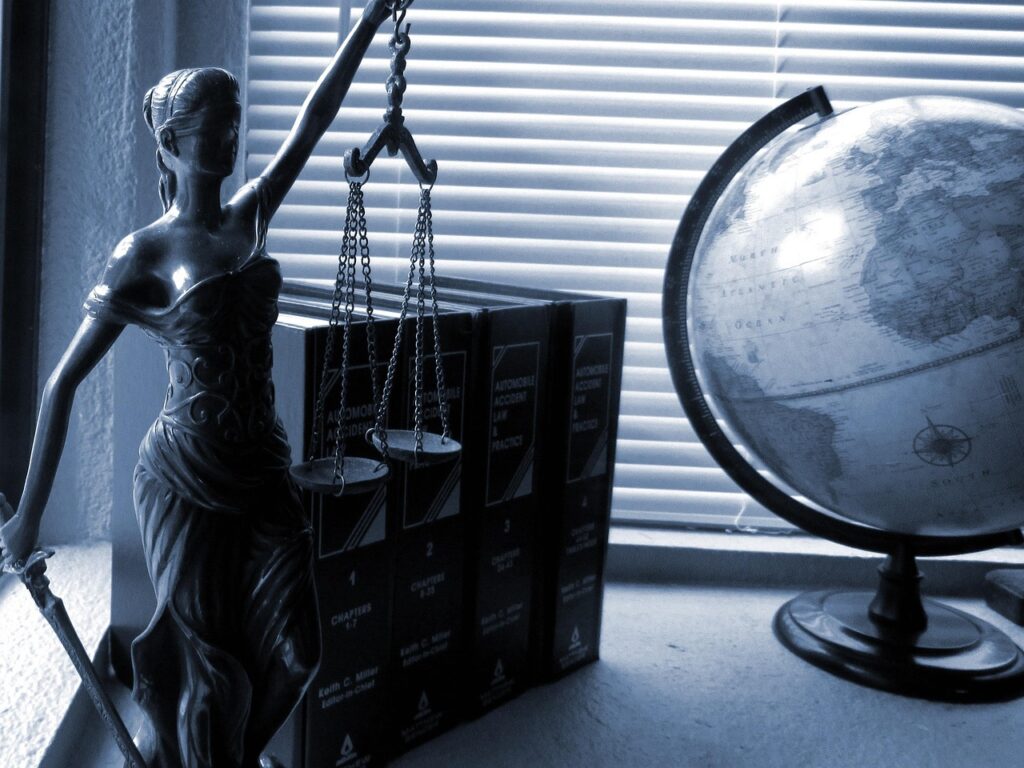Published On: 15th August, 2024
Authored By: Vivek V. Yadav
DR. D. Y. Patil College of Law
FACTS:
A patent application was filed by Tunisian innovator Ferid Allani in India in 1999 for a creation named “Method and Device for Accessing Information Sources and Services on the Web.” In 2008, the Indian Patent Office (IPO) rejected the request, referencing Section 3(k) of the Patents Act, which prohibits patents for “a mathematical or business method or a computer program per se or algorithms.” Allani brought a case to the Intellectual Property Appellate Board (IPAB) in 2009, but the appeal was rejected in 2013. Afterwards, Allani submitted a writ petition to the Delhi High Court contesting the IPAB’s decision.
ISSUE:
The primary issues in this case were:
- What is the correct interpretation of Section 3(k) of the Patents Act, specifically in regards to the term “computer program per se”?
- In what scenarios can Computer-Related Inventions (CRIs) be eligible for patent protection in India?
- Can the inclusion of a “technical effect” or “technical advancement” in a computer-related invention result in it being eligible for a patent, even if it includes a computer program?
RULE:
The applicable rules in this case include:
- Section 3(k) of the Indian Patents Act, 1970, states that mathematical, business methods, computer programs, and algorithms are not eligible for patents.
- In 2017, the Indian Patent Office released the Guidelines for Examination of Computer-Related Inventions.
ANALYSIS:
The Delhi High Court made several key observations in its judgment:
- Clarification on “per se”: The court emphasized that the deliberate addition of the term “per se” in Section 3(k) was intended to prevent valid inventions related to computer programs from being denied patents. This analysis is consistent with the intention of the law to safeguard advancements in CRIs.
- The court ruled that a computer program can be patented if it shows a “technical effect” or a “technical contribution.” The ruling mentioned: “To determine the patentability of CRIs, the focus should be on the content of the invention rather than the format.”
- Examination Instructions: The court cited the 2017 Guidelines, recommending that examiners accurately interpret the claim and identify the real contribution in order to determine whether the invention is simply a computer program on its own or if it provides a technical effect.
- Necessity of Technological Progress: The court stressed that for a CRI to be eligible for a patent, it must exhibit a “technical effect” or address a “technical issue.” Using a computer program alone does not exclude an invention from being patented if it includes a unique hardware element or if the software enhances the hardware’s operation.
- Send back to Patent Office: Instead of ruling on the patentability of Allani’s invention, the court sent the case back to the Patent Office for a new assessment based on the judgment and the most recent CRI guidelines.
The court’s decision has significant implications:
- Explanation of Section 3(k): The ruling offered essential clarification on how to understand Section 3(k) of the Patents Act. The court’s emphasis on the term “per se” allowed for the possibility of patenting computer-related inventions that show technical effect or contribution.
- Conforming to Worldwide Trends: This choice aligns Indian patent law more closely with global norms. Several advanced countries, such as the US and European nations, permit patents for software innovations that show technical impact or address technical issues.
- Increase in Innovation in the IT Sector: The decision is expected to promote innovation in India’s thriving IT industry. Creating a way to patent true computer-related innovations, gives more security and motivation for creators and businesses investing in software growth.
- Instructions for Patent Examiners: The court’s focus on analyzing the essence of the innovation over its appearance offers patent examiners specific guidelines. This is anticipated to result in more uniform and just assessments of CRI patent submissions.
- Finding the right balance: The decision aims to protect real innovations while also stopping the patenting of just software. This method strives to encourage creativity while also thwarting abuse of the patent system.
- More patent applications are expected to be filed for computer-related inventions in India as a result of the decision. Businesses and individuals who previously refrained from filing patents because of uncertainty might now be more encouraged to do so.
- Effect on Startups and SMEs: Startups and small to medium enterprises (SMEs) in the technology industry may see a positive impact from the ruling. These organizations frequently depend significantly on software advancements, and securing patents for their creations could give them a competitive advantage and draw in investments.
- Importance of Skillful Patent Drafting: The ruling highlights the need for skilled patent drafting in the case of CRIs. Patent applications must clearly show the technical impact or contribution of the invention in order to increase the likelihood of approval.
After the Ferid Allani ruling, there have been multiple advancements.
- Indian Patent Office Policy: The Indian Patent Office has adopted a more lenient attitude towards reviewing CRI applications. There has been a rise in the number of patents granted for software-related inventions showing evident technical effects.
- Additional Court Rulings: The following verdicts in other cases have cited and expanded on the Ferid Allani ruling, enhancing the comprehension of CRI patent eligibility in India.
- Reaction from the Industry: The tech sector in India has mostly embraced the move, viewing it as a proactive measure to safeguard software advancements.
Even though it was well-received, the decision has encountered certain difficulties and negative feedback.
- Subjectivity in Evaluation: Defining what qualifies as a “technical effect” or “technical contribution” can vary between individuals, which may result in uneven patent assessments.
- Fears about Patent Thickets: Some specialists express concerns that a more relaxed stance on software patents might result in patent thickets, possibly hindering innovation, particularly for smaller entities.
- Additional Clarification Required: Although the judgment sets a foundation, there is still a necessity for more precise criteria on which software innovations are eligible for patent protection.
CONCLUSION:
The case of Ferid Allani v. Union of India & Ors. is a crucial development in Indian patent law regarding computer-related inventions. The Delhi High Court has paved the way for a more balanced approach to software patenting in India by offering a detailed analysis of Section 3(k) of the Patents Act and highlighting the significance of technical effect and contribution.
This decision brings India in line with international patent standards while still protecting against unlimited software patenting. It finds a middle ground by promoting technological innovation while also stopping the abuse of the patent system.
The court’s choice to return the case to the Patent Office for a new evaluation, instead of making a ruling on the patentability of Allani’s invention, shows a careful approach. It guarantees that the Patent Office, utilizing its technical knowledge, is able to use the court’s standards to evaluate the patentability of the invention.
The focus on “technical effect” and “technical contribution” as standards for the patentability of CRIs represents a notable change. It shifts the attention from the structure of the creation (such as if it includes a software program) to its essence (like the technical issue it addresses or the technical progress it offers). This method aligns better with the intent of patent law, which is to safeguard and promote true breakthroughs.
The ruling also acknowledges the changing technology landscape and the growing use of software in different innovations. The court’s clarification that just having a computer program doesn’t automatically make an invention unpatentable has expanded patent opportunities in fields such as artificial intelligence, the Internet of Things, and other emerging technologies reliant on software.
This decision has the potential to significantly impact the Indian IT industry. India has built a strong reputation as a software giant, however, the inability to patent software innovations has been a worry for numerous companies and innovators. This choice could possibly result in higher R&D spending in the software industry since businesses now have a more defined route to safeguarding their inventions.
The possible rise in patent applications for CRIs may also lead to wider economic consequences. This could potentially draw increased foreign investment in India’s technology industry, as companies might now view India as a more attractive location for software innovations. This could enhance India’s standing in the worldwide technology scene even more.
Nevertheless, the decision also presents fresh obstacles. The variability in defining what qualifies as a “technical effect” or “technical contribution” may result in inconsistencies during patent evaluations. This highlights the necessity of providing patent examiners with clear guidelines and training to guarantee consistent implementation of these principles.
Encouraging innovation while avoiding the formation of patent thickets requires a careful balance. It is important that the ruling on software patents does not allow big companies to hinder competition by patenting too many ideas. The Indian Patent Office must stay alert to ensure that only true innovations are granted patent protection.
The Ferid Allani case underscores the need for expert patent drafting in the field of CRIs. Patent applicants must clearly explain the technical impact or benefit of their invention. This may result in an increased need for patent lawyers who specialize in software and technology.
In the future, it is probable that this ruling will not be the ultimate decision on software patents in India. With the continuous evolution of technology, there will be new challenges and inquiries emerging. Future instances could potentially develop and enhance further.
To sum up, the case of Ferid Allani signifies a fresh start in Indian IP rights, especially concerning computer-based innovations. It offers a more detailed and tech-savvy understanding of patent law, bringing India in line with international norms while also preserving essential protections. As India solidifies its position as a prominent technology center on a global scale, the effects of this situation are expected to have wide-ranging impacts on creators, enterprises, and the overall technology environment in the nation for a considerable period of time. Despite some remaining obstacles, this ruling establishes a strong base for tackling the intricacies of patenting in the era of digital technology.




